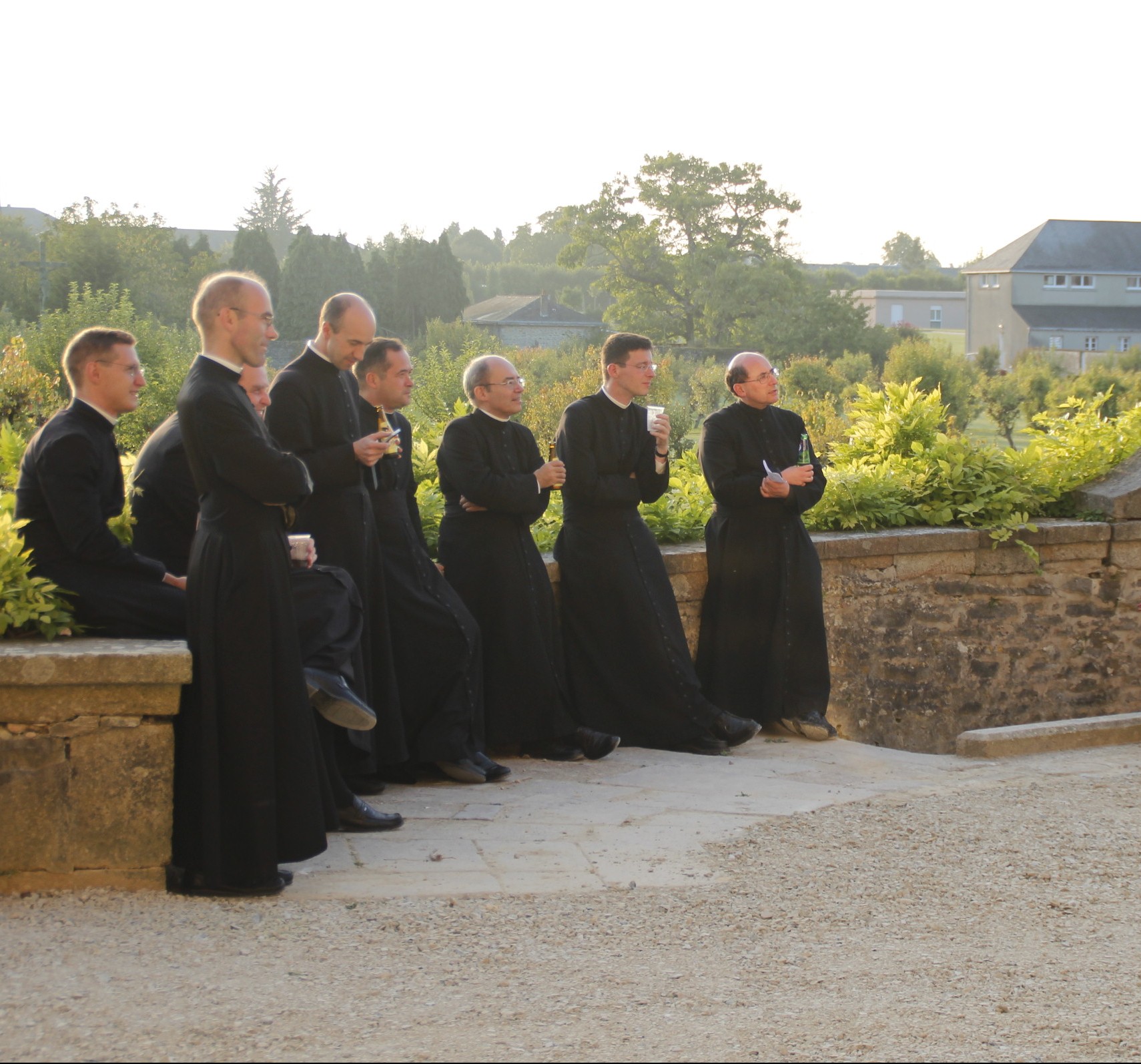Why wear the cassock?
By don Louis-Hervé Guiny, superior of the Formation House
The ecclesiastical attire
The ecclesiastical attire plays a double role:
- for the one who wears it every day, it is a very concrete reminder of his consecration and of his mission.
- for those who see it, believers or not, it lets them immediately identify the man of God. The habit of those consecrated to God is a very simple first testimony of the presence of God among mankind.
That is why the Church asks of clerics to wear an identifiable ecclesiastical attire. The Directory for the ministry and the life of priests (2013) explains:
The ecclesiastical attire is the exterior sign of an interior reality; in fact, the priest does not belong to himself anymore, but, by the seal sacramentally received, he is the “property” of God. The fact “to exist for Another” must be recognizable for everyone, by a transparent testimony, […] even in the attire.
Cassock or clergyman?
The Community of Saint Martin ordinarily prefers the cassock to the “clergyman” (black suit and roman collar). This choice is founded on numerous reasons:
The cassock is even today the traditional attire of clerics in the Church (who would recognize the Holy Father without his white cassock?). Even among them who have driven away from the Church, the cassock has quite often stayed in the mentalities and continues to identify “the parish priest”!
Carried with simplicity, like a “working coat”, the cassock reveals itself as a garment adaptable to all environments and all ministries; it may help the priest to make of himself all things to all.
Finally, in a society more and more secularized, the cassock plays its role as a sign that there exists another reality. As an unusual habit, it incites people to pose themselves questions and to enter into contact.




